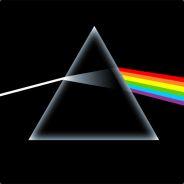New TV help
I want to get a new TV, and my primary connected devices will be the cable box and my PS3. Is 120 HZ worth it? I can't find out a technical source explaining what it really does. Is it support for 120Hz output (which the PS3 can't do) or does the TV interpolate frames? Guide, please?
Holy crap I started a blog - http://unobvious.typepad.com/
The TV interpolates frames. As far as I know, no 120Hz TV actually accepts 120Hz input.
I've seen in-store comparisons between a regular HDTV and a 200Hz ones and there's definitely a difference. Of course, the 200Hz TVs are generally higher quality anyway, so it's not really apples-to-apples. I wasn't really looking all that hard anyway, but I suggest you should probably check them out in-store.
I've seen in-store comparisons between a regular HDTV and a 200Hz ones and there's definitely a difference. Of course, the 200Hz TVs are generally higher quality anyway, so it's not really apples-to-apples. I wasn't really looking all that hard anyway, but I suggest you should probably check them out in-store.
Quote: Original post by Codeka
The TV interpolates frames. As far as I know, no 120Hz TV actually accepts 120Hz input.
I've seen in-store comparisons between a regular HDTV and a 200Hz ones and there's definitely a difference. Of course, the 200Hz TVs are generally higher quality anyway, so it's not really apples-to-apples. I wasn't really looking all that hard anyway, but I suggest you should probably check them out in-store.
Something to check when looking at TVs in the store is look how they are hooked up - HDMI vs. composite vs. component. Also play around with contrast and brightness settings, if allowed. I've heard of companies making cheaper models look worse in order to sell more expensive sets.
While generally marketed toward gamers and sports fans, in my opinion 120hz is really only technologically relevant for film fans. But the idea is as follows:
a) I haven't been in the market for new TV in a while, but the last time I checked in mid 2008, 120hz TVs only accepted 60hz input, even via VGA/DVI connections when connected to a computer. That may have changed recently, but for most applications the source data is still 30fps/60hz.
b) Motion Interpolation:
Motion Interpolation is where you essentially take two frames, and try to interpolate a new temporal frame between them. In this case you really get what you pay for, higher end interpolators do a much better job, but ultimately you aren't really gaining any "real" information, its just smoother. Even high end interpolators are going to screw up every once in a while and "guess" incorrectly, and when they do they will introduce artifacts into the interpolated frame that is not in the source media.
This is the feature that is marketed to sports fans and gamers, and while impressive at first glance. I have yet to see an interpolator that I really enjoy watching for a extended period of time, and artifacts bother the heck out of me when I notice them. But your mileage may vary, but just be aware that quality varys substantially with this technology.
c) Backlight strobing:
Not a feature that is exclusive to 120hz TVs but can often be found on them. The idea here is that if you leave the LCD backlight on all the time, then the frames tend to bleed together causing a certain degree of motion blur. By synchronously strobing the backlight, you can achieve a much "crisper" frame distinction by allowing the pixels to be progressively lit for a far shorter amount of time. (Movie theater cameras do a very similar process, instead of showing each frame for 1/24th of a second, they might show each frame twice for 1/96th of a second, basically inserting a "cold" frame between two "hot" frames to increase the impact on the eye)
d) Jitter Reduction
In my opinion, this is the only reason to really consider a 120hz tv.
The idea is that HD media is 30fps, which poses a challenge for 24fps content such as films. Using a standard telecine approach introduces a "jitter", because to stretch 24fps to 30fps then for every 4 frames input frames there have to be 5 output frames. This usually manifests itself in slow camera moves and pans. They will appear to stutter at regular intervals (more so than they would if you were watching the same media at the proper frame rate)
What Jitter Reduction does is first detect that the source material is 24fps. Then it will reverse the telecine process, and then display each frame 5 times, matching the 120hz refresh rate. For source material that does not satisfy this requirement each frame is simply displayed 4 times (again 120hz). That is the real advantage of 120hz, its a multiple of both 24 and 30.
Now, some people can't stand jitter reduction, saying it doesn't look "Film-like", which comes from years of exposure watching 24fps media on 60hz displays, and associating that "Film-like" quality with telecine jitter. Personally, I prefer the experience I get at the theater.
---
Now that all that is said and done, it really depends on how much money you have and what your eyes like. Go to the store and look at some, turn the features off and on. Its more what you like to look at than anything else.
a) I haven't been in the market for new TV in a while, but the last time I checked in mid 2008, 120hz TVs only accepted 60hz input, even via VGA/DVI connections when connected to a computer. That may have changed recently, but for most applications the source data is still 30fps/60hz.
b) Motion Interpolation:
Motion Interpolation is where you essentially take two frames, and try to interpolate a new temporal frame between them. In this case you really get what you pay for, higher end interpolators do a much better job, but ultimately you aren't really gaining any "real" information, its just smoother. Even high end interpolators are going to screw up every once in a while and "guess" incorrectly, and when they do they will introduce artifacts into the interpolated frame that is not in the source media.
This is the feature that is marketed to sports fans and gamers, and while impressive at first glance. I have yet to see an interpolator that I really enjoy watching for a extended period of time, and artifacts bother the heck out of me when I notice them. But your mileage may vary, but just be aware that quality varys substantially with this technology.
c) Backlight strobing:
Not a feature that is exclusive to 120hz TVs but can often be found on them. The idea here is that if you leave the LCD backlight on all the time, then the frames tend to bleed together causing a certain degree of motion blur. By synchronously strobing the backlight, you can achieve a much "crisper" frame distinction by allowing the pixels to be progressively lit for a far shorter amount of time. (Movie theater cameras do a very similar process, instead of showing each frame for 1/24th of a second, they might show each frame twice for 1/96th of a second, basically inserting a "cold" frame between two "hot" frames to increase the impact on the eye)
d) Jitter Reduction
In my opinion, this is the only reason to really consider a 120hz tv.
The idea is that HD media is 30fps, which poses a challenge for 24fps content such as films. Using a standard telecine approach introduces a "jitter", because to stretch 24fps to 30fps then for every 4 frames input frames there have to be 5 output frames. This usually manifests itself in slow camera moves and pans. They will appear to stutter at regular intervals (more so than they would if you were watching the same media at the proper frame rate)
What Jitter Reduction does is first detect that the source material is 24fps. Then it will reverse the telecine process, and then display each frame 5 times, matching the 120hz refresh rate. For source material that does not satisfy this requirement each frame is simply displayed 4 times (again 120hz). That is the real advantage of 120hz, its a multiple of both 24 and 30.
Now, some people can't stand jitter reduction, saying it doesn't look "Film-like", which comes from years of exposure watching 24fps media on 60hz displays, and associating that "Film-like" quality with telecine jitter. Personally, I prefer the experience I get at the theater.
---
Now that all that is said and done, it really depends on how much money you have and what your eyes like. Go to the store and look at some, turn the features off and on. Its more what you like to look at than anything else.
I'll second kryat's post: 120Hz is absolutely worth it for watching 24fps material (ie, films). However, North American viewers may be used to the irritating motion judder you get from 2:3 pulldown to display a 24fps source at 60Hz, but it's very noticeable to European viewers who are used to the source being sped up to 25fps for display at 50Hz (2:2 pulldown).
(As an aside, for those people watching films on their PCs, I strongly recommend PowerStrip and ReClock - the two can be combined to automatically force your monitor to run at specific rates for particular media types, in my case 72Hz for films, 50Hz for PAL video and 60Hz for NTSC video).
(As an aside, for those people watching films on their PCs, I strongly recommend PowerStrip and ReClock - the two can be combined to automatically force your monitor to run at specific rates for particular media types, in my case 72Hz for films, 50Hz for PAL video and 60Hz for NTSC video).
[Website] [+++ Divide By Cucumber Error. Please Reinstall Universe And Reboot +++]
This topic is closed to new replies.
Advertisement
Popular Topics
Advertisement









